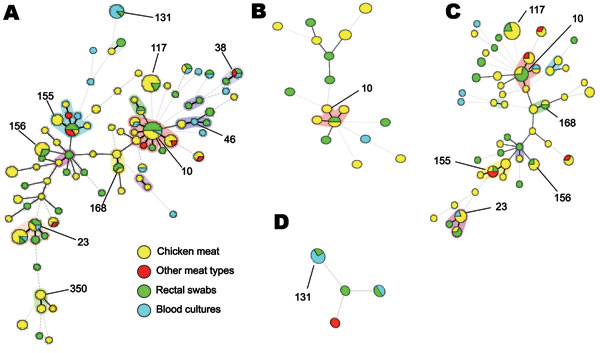Volume 17, Number 7—July 2011
Research
Extended-Spectrum β-Lactamase Genes of Escherichia coli in Chicken Meat and Humans, the Netherlands
Figure 2

Figure 2. Multilocus sequence typing patterns of Escherichia coli from chicken meat, other meat types, human rectal swabs, and human blood cultures, the Netherlands. A) All E. coli containing extended-spectrum β-lactamase genes; B) E. coli containing blaTEM-52; C) E. coli containing blaCTX-M-1; D) E. coli containing blaCTX-M-15. Major sequence types are shown as numbers. Black connecting lines indicate single-locus variants; gray connecting lines indicate double-locus variants; dashed connecting lines indicate strains with >3 loci that are different; and shadowing indicates that >2 sequence types belong to 1 complex.
Page created: August 18, 2011
Page updated: August 18, 2011
Page reviewed: August 18, 2011
The conclusions, findings, and opinions expressed by authors contributing to this journal do not necessarily reflect the official position of the U.S. Department of Health and Human Services, the Public Health Service, the Centers for Disease Control and Prevention, or the authors' affiliated institutions. Use of trade names is for identification only and does not imply endorsement by any of the groups named above.